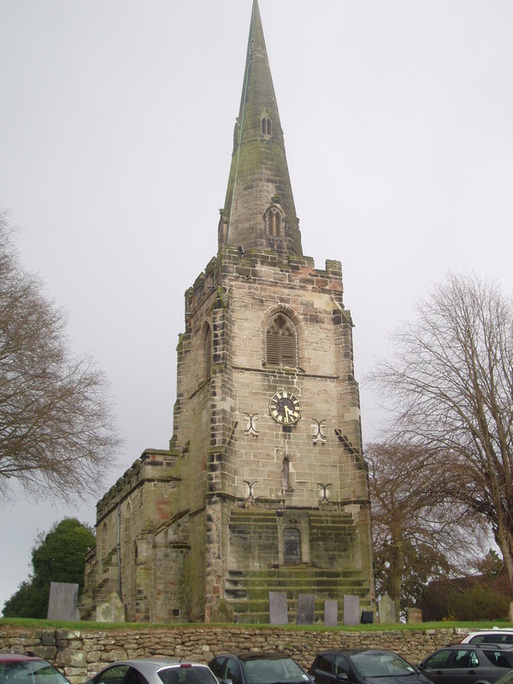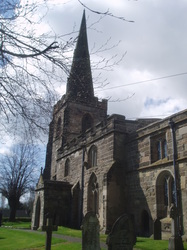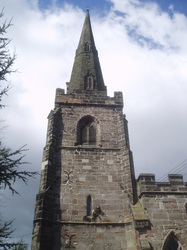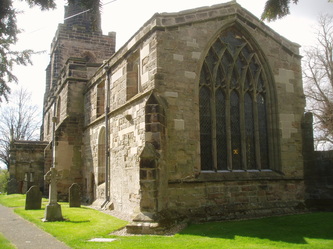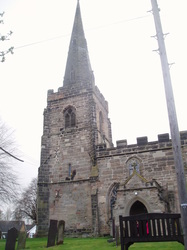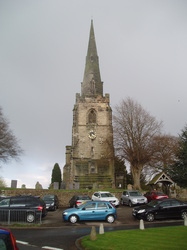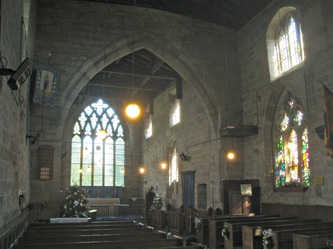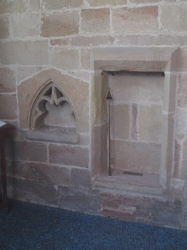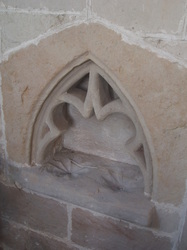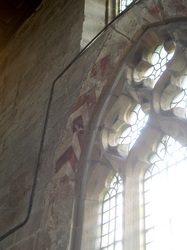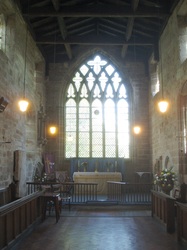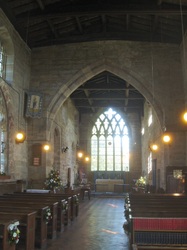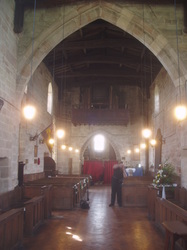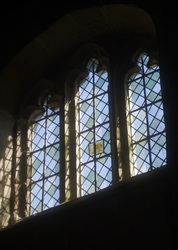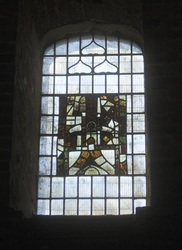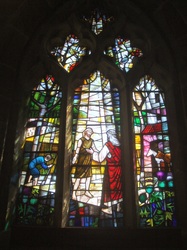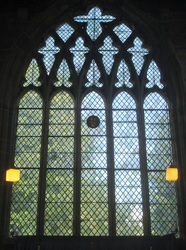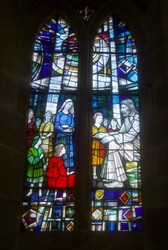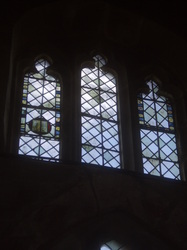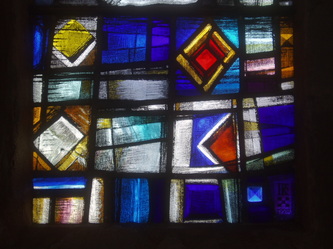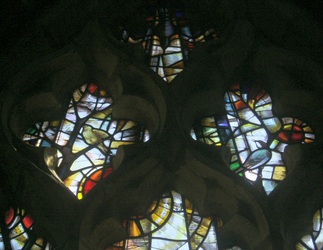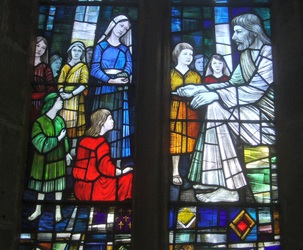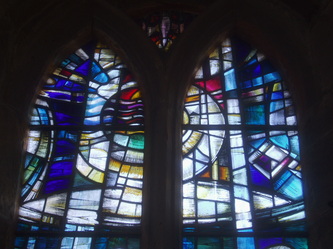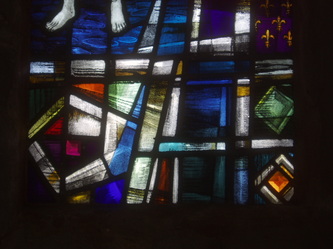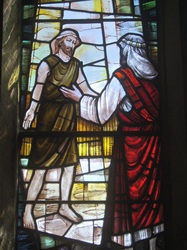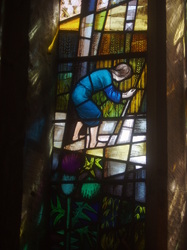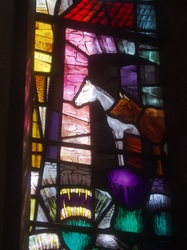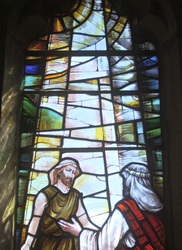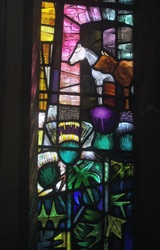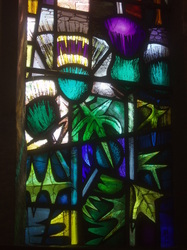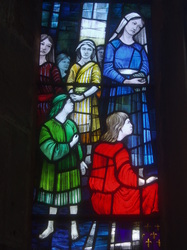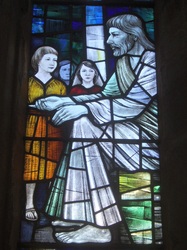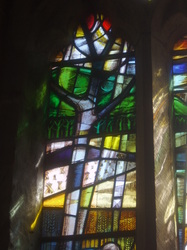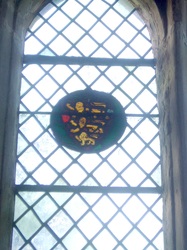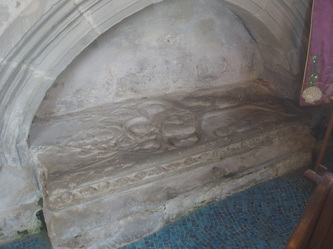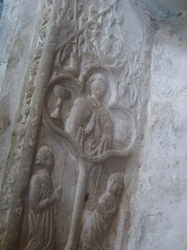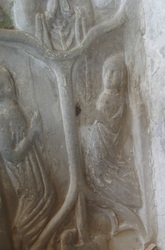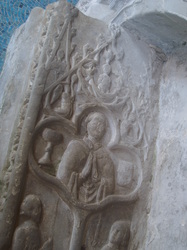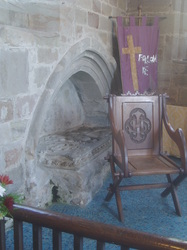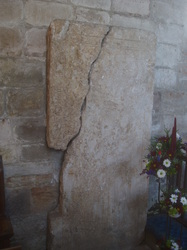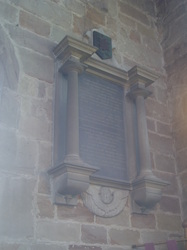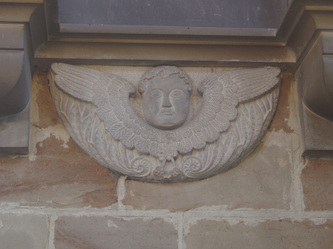Newton Regis - St Mary
St Mary's at Newton Regis can claim to be the county's most northerly church (it is a close thing with nearby Seckington) and is an impressive medieval edifice, but alas not one of the more easily appreciated, being in that cluster of North Warwickshire churches that are rarely open for visitors.
I got to St Mary's bang on 2.30 when it was due to close (the nice ladies I'd met at Austrey said it was for a wedding) and seeing two wedding guests having pulled up outside rushed inside quickly without even taking a quick exterior shot in the blazing sunshine (which I later regretted). Only three people inside and not wedding guests (two photographing the flowers, the other the churchsitter who was delighted to have a visitor at last) and quite happy for me to look around as they said the wedding didn't start for another hour! So I'd rushed Austrey needlessly as it turned out, but at least I'd got in here against the odds!
I got to St Mary's bang on 2.30 when it was due to close (the nice ladies I'd met at Austrey said it was for a wedding) and seeing two wedding guests having pulled up outside rushed inside quickly without even taking a quick exterior shot in the blazing sunshine (which I later regretted). Only three people inside and not wedding guests (two photographing the flowers, the other the churchsitter who was delighted to have a visitor at last) and quite happy for me to look around as they said the wedding didn't start for another hour! So I'd rushed Austrey needlessly as it turned out, but at least I'd got in here against the odds!
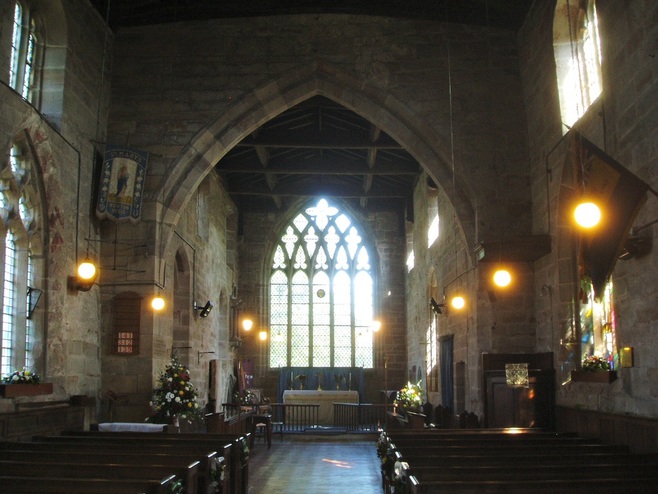
I
The church is aisleless but with a clerestorey and quite light inside, mainly plain glazed, excepting the odd medieval fragment here and there. The overall form of this interior is very close to that of neighbouring Seckington, the main difference here being the provision of a clerestorey, a late medieval addition to this otherwise largely 14th century building. There are fragments of wall painting in red around the splays of a north nave window.
On the south side of the sanctuary is the empty square recess that must formerly have been some kind of aumbry, a cupboard for the sacred vessels, and alongside this the piscina which is a fine 14th century feature, with twin fluted basins beneath an unusually designed cusped arch.
The surviving medieval glass consists of only the smallest fragments, but even that is more than the majority churches posses. There is a patchwork (suggesting a canopy) in the small west window, and a complete heraldic roundel (three leopards within a red shield) in the centre of the large east window, both pieces dating to the 14th century. Additionally there are fragments of 16th century glass in the later nave clerestorey, most significantly two square pieces with self contained scenes in silver stain, one showing a griffin, the other a seated crowned figure with a halo (the details are difficult to make out).
The church is aisleless but with a clerestorey and quite light inside, mainly plain glazed, excepting the odd medieval fragment here and there. The overall form of this interior is very close to that of neighbouring Seckington, the main difference here being the provision of a clerestorey, a late medieval addition to this otherwise largely 14th century building. There are fragments of wall painting in red around the splays of a north nave window.
On the south side of the sanctuary is the empty square recess that must formerly have been some kind of aumbry, a cupboard for the sacred vessels, and alongside this the piscina which is a fine 14th century feature, with twin fluted basins beneath an unusually designed cusped arch.
The surviving medieval glass consists of only the smallest fragments, but even that is more than the majority churches posses. There is a patchwork (suggesting a canopy) in the small west window, and a complete heraldic roundel (three leopards within a red shield) in the centre of the large east window, both pieces dating to the 14th century. Additionally there are fragments of 16th century glass in the later nave clerestorey, most significantly two square pieces with self contained scenes in silver stain, one showing a griffin, the other a seated crowned figure with a halo (the details are difficult to make out).
Stained Glass
The furnishings do not make much impact on the interior and are mostly of more Victorian or later date. The most conspicuous adornments are two fine recent figurative windows by Warwickshire based artist Roger Fifield; That on the south side of the nave dates from 1988 and depicts the return of the Prodigal Son. On the north side of the chancel represents Christ calling the children unto Him, and is shown seated as teacher to them (in refreshing contrast to the sentimental Victorian child-hugging images of this subject one sees frequently in churches).
Monuments
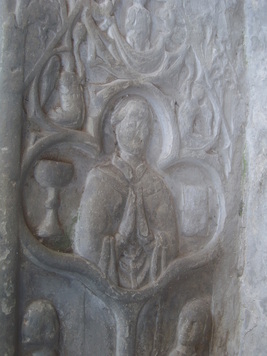
The outstanding feature here is on the north side of the sanctuary, a highly unusual 14th century priest's tomb in a recess with a slab in high relief portraying a praying bust of the deceased amidst ornate canopywork (inhabited by angels, with the individual's soul represented directly above in a sheet held by more angels) with two kneeling mourners below and a Lamb of God at the base, a unique composition as far as I know, somewhat worn but still enjoyable.
Also on the north wall of the chancel nearby is a late 13th/early 14th century incised tomb slab to a civilian, with his standing image surrounded by an inscription, all alas badly worn and difficult to make out. The left hand side has suffered more damage and been partially broken off. Originally this would have been set in the floor of the church and must have been mounted here more recently.
On the wall above the priest's tomb is a late 17th century memorial tablet to a former vicar and his family, with an amusingly rustic cherub at it's base.
Also on the north wall of the chancel nearby is a late 13th/early 14th century incised tomb slab to a civilian, with his standing image surrounded by an inscription, all alas badly worn and difficult to make out. The left hand side has suffered more damage and been partially broken off. Originally this would have been set in the floor of the church and must have been mounted here more recently.
On the wall above the priest's tomb is a late 17th century memorial tablet to a former vicar and his family, with an amusingly rustic cherub at it's base.
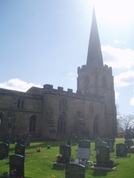
To summarise this is a church well worth seeing but sadly difficult of access as it is normally kept locked without keyholder information. There are sporadic open days throughout the year but otherwise it will require an appointment with the churchwarden or a well timed 'close of a service' visit to see inside.
Aidan McRae Thomson 2013
Aidan McRae Thomson 2013
